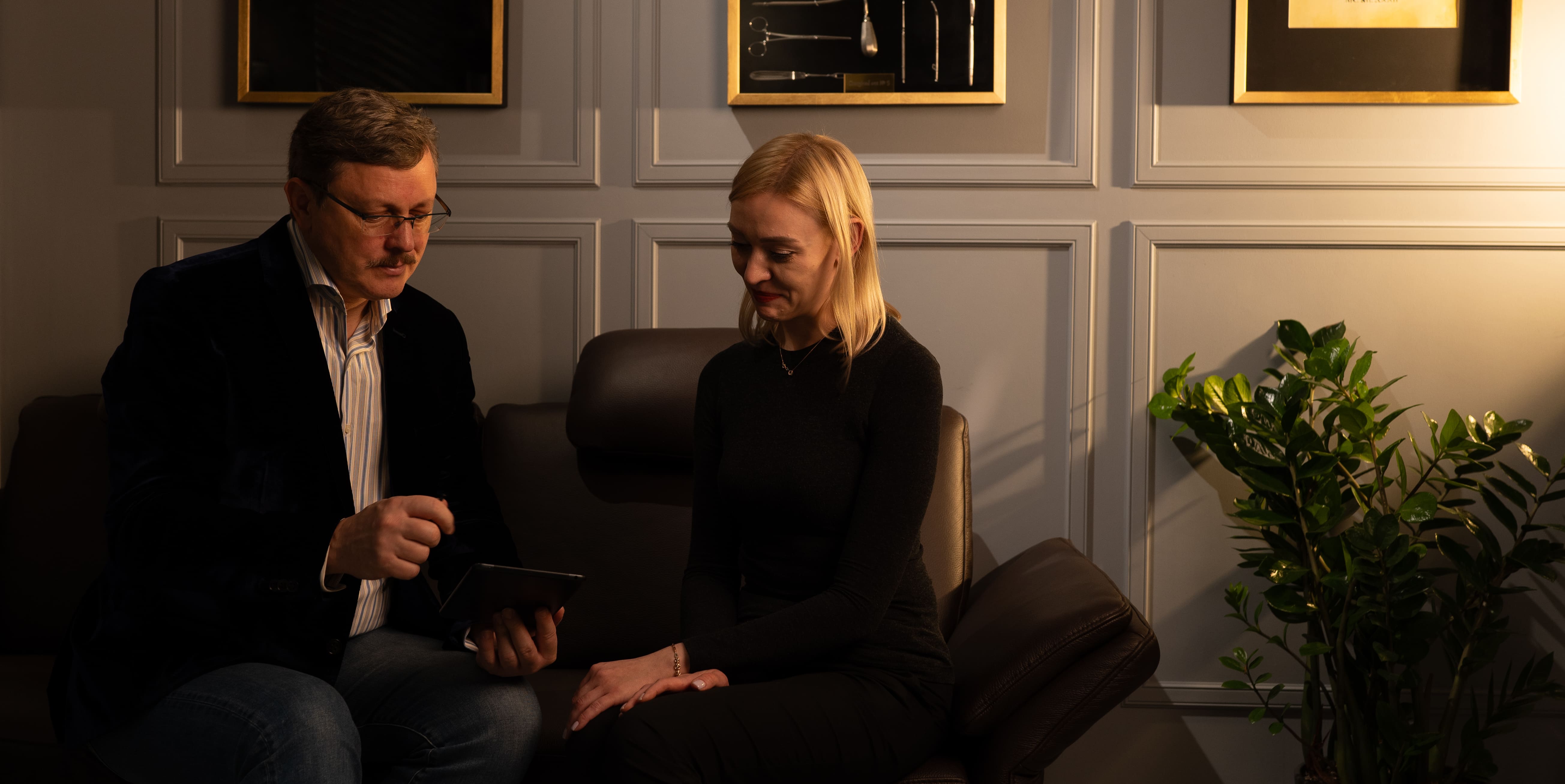How to Avoid Revision Rhinoplasty: 5 Key Factors for a Stable and Natural Result
Rhinoplasty is one of the most delicate and technically complex procedures in plastic surgery. The nose defines facial balance, influences the expressiveness of the eyes and the harmony of the profile, and plays a crucial role in breathing function. Unfortunately, revision surgeries occur more frequently than we would like. They may result from individual healing characteristics, surgical errors or limited experience of the surgeon, an overly aggressive primary correction, or operative techniques that did not provide adequate structural support. However, in most cases, revision can be avoided if the approach from the beginning is thoughtful, consistent, and professional.
1. Thorough Preoperative Planning
The work of a plastic surgeon begins not in the operating room, but during the consultation. It is essential to evaluate not only the nose itself, but also the facial proportions, skin thickness, the presence of septal deviation, internal nasal valve weakness, and any previous trauma.
This is the stage at which the achievable shape is realistically defined. A desired look from an Instagram photo is not always the answer; in some cases, it may contradict the patient’s anatomy. Professional facial and nasal aesthetic planning helps establish realistic expectations.

2. Integrating Aesthetics and Function
Many patients seek rhinoplasty for aesthetic reasons, but breathing issues (such as septal deviation or internal valve insufficiency) can be the source of both aesthetic concerns and dissatisfaction after surgery. Studies show that pre-existing functional problems increase the likelihood of revision.
A visually appealing result may be accompanied by impaired breathing or progressive deformity if function is not addressed. Therefore, primary rhinoplasty should correct both aesthetic and functional aspects simultaneously.
Modern primary rhinoplasty may include septoplasty (if needed), strengthening of the nasal valves, restoration of symmetry, and shaping of the nasal dorsum and tip.
3. Structural Techniques for Long-Term Stability
Modern surgeons are increasingly moving away from approaches focused on simply “removing excess tissue” or making a universally small, overly refined “doll-like” nose.
Insufficient or excessive cartilage resection, weak support structures, or inadequate fixation can lead to deformities over time, making revision rhinoplasty necessary. A surgeon must possess a wide range of techniques and be able to select the most suitable approach for the patient’s specific anatomy.
Thoughtful nasal framework construction prevents tip collapse, alar retraction, or dorsal irregularities. Using cartilage grafts when appropriate creates a stable nasal architecture that maintains its shape for years.
4. The “Undetectable” Aesthetic: A Result That Does Not Look Surgically Altered
The leading trend today is naturalness and preservation of individuality. The nose should not look “operated on.”
The concept of “undetectable aesthetics” means that the nose appears natural: the shape aligns with the patient’s ethnic characteristics and facial proportions, scars are subtle, and the contours are smooth and harmonious.
In most cases, the surgeon works delicately with the nasal tip, avoiding overly sharp or excessive definition, which can appear unnatural over time. Selective techniques help minimize visible scarring and maintain a soft, authentic nasal contour.
A nose created with this approach does not draw attention. The face simply appears more balanced, but no one can pinpoint exactly what has changed.
5. Patience and Proper Recovery
Even with impeccable surgical technique, the result develops gradually. Swelling decreases in stages, the nasal tip naturally settles over several months, and the final shape appears at around one year — sometimes up to 18 months. Follow-up care and adherence to postoperative guidelines are essential for a stable outcome.
Ultimately, revision rhinoplasty can be prevented in many cases when the initial approach prioritizes thoughtful structural planning, combining both aesthetic and functional goals. A successful result should be not only beautiful, but natural, balanced, and subtle — this is the essence of the “undetectable” aesthetic that defines contemporary rhinoplasty.
Contact me
Plastic surgeon
Ukraine, Kyiv, Shchekavytska St., 9a
(Clinic "Nove Tilo")


